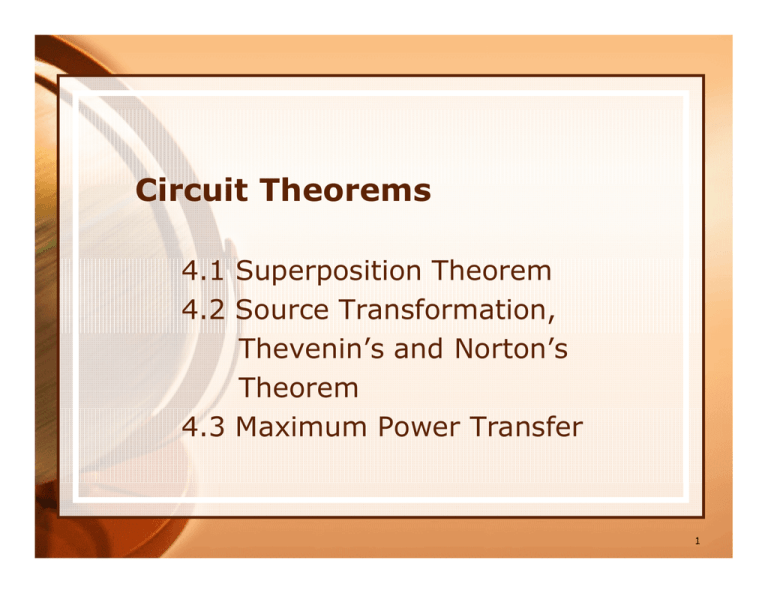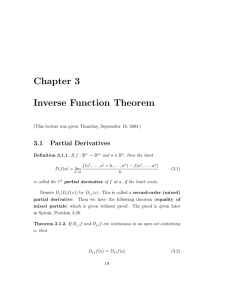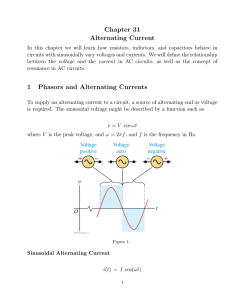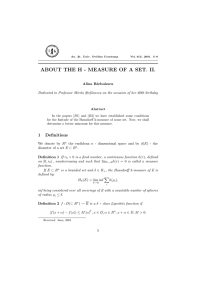PPT : Circuit Theorems
advertisement

Circuit Theorems 4.1 Superposition Theorem 4.2 Source Transformation, Thevenin’s and Norton’s Theorem 4.3 Maximum Power Transfer 1 Learning Outcomes 1. Discuss the Superposition p p Principles p 2. Solve circuit problems using Superposition theorem 3. Apply the Source Transformation in the circuits 4. Carry out the Thevenin's and Norton's Theorem in the circuits 5. Describe Maximum Power Transfer 2 SUPERPOSITION THEOREM 3 Superposition Theorem Superposition : the voltage across (or current through) an element in a linear circuits is the algebraic sum of the voltage across (or current through) that element due to each independent source acting alone. Current Source Æ open circuit(0 A) Voltage Source Æ short circuit (0 V) 4 Superposition Theorem Step to apply: 1. Turn off all independent sources except one source. Find the output p ((voltage g or current) due to that active source. 2. Repeat p step p 1 for each other independent sources. 3. Find the total contribution by adding algebraically all the contribution due to the independent source. 5 SOURCE TRANSFORMATION 6 Source Transformation Source transformation : replacing a voltage source vs in series with a impedance Z by a currentt source is in i parallel ll l with ith a impedance Z, or vice versa. 7 Source Transformation 8 THEVENIN’S ’ THEOREM 9 Thevenin’s Theorem Thevenin’s theorem : a linear two terminal circuit can be replaced by an equivalent circuit consisting of a voltage VTh in series with an impedance ZTh , where VTh is the open circuit voltage at the terminals and ZTh is the input or equivalent impedance at the terminals when the independent source are turned off. 10 Thevenin’s Theorem 11 Thevenin’s Theorem Finding VTh and ZTh 12 Thevenin’s Theorem Z Finding ZTh when circuit has dependent sources 13 Thevenin’s Theorem Circuit with load VTh IL = RTh + RL RL VL = RL I L = VTh RTh + RL 14 NORTON’S ’ THEOREM 15 Norton’s Theorem Norton’s Theorem : a linear twoterminal circuit can be replaced by an equivalent circuit consisting of a current source IN in parallel with an impendence ZN, where IN is the short circuit current through the terminals and ZN is the input or equivalent impedance at the terminals when the independent source are turned off. 16 Norton’s Theorem RN = RTh 17 Norton’s Theorem Fi di N Finding Norton current IN. I N = isc VTh IN = RTh 18 Thevenin and Norton Equivalent VTh = voc I N = isc voc VTh RTh = = = RN isc IN 19 MAXIMUM POWER TRANSFER 20 Maximum Power Transfer Maximum power : transferred to the load when the load resistance equals the Thevenin resistance as seen from the load (RL = RTh) 21 Maximum Power Transfer R L = R Th p max V Th2 = 4 R Th 22


